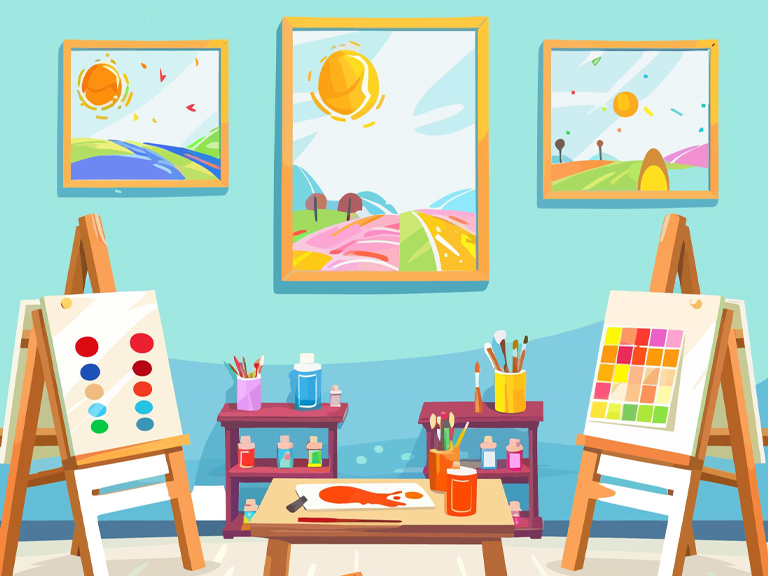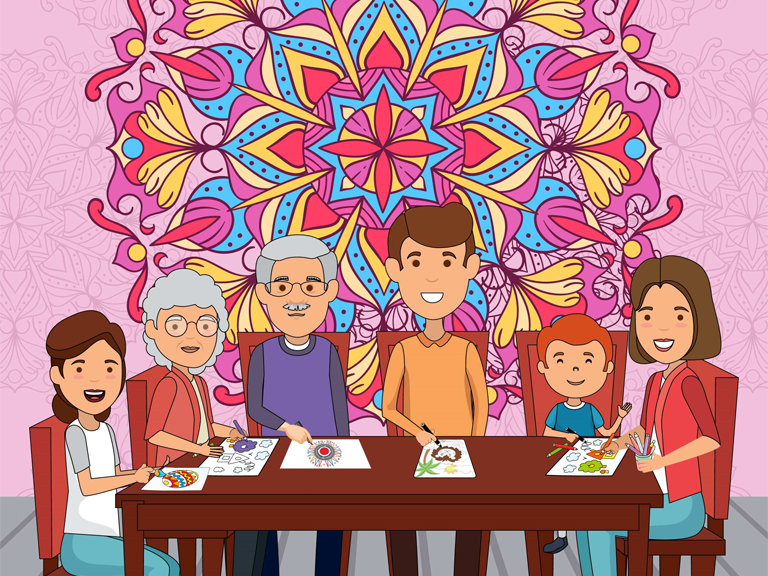From Rose Windows to Touchscreens: The Mandala’s Journey Across Cultures and Technologies
Recent Blog
The mandala, a symmetrical diagram…
Family life often scatters generations…

The mandala, a symmetrical diagram of radiating shapes, has travelled farther than most works of art—across continents, centuries, and now operating systems. Federico B. Cuadra’s books stand at the latest waypoint of this journey, translating an ancient symbol of unity into family-friendly coloring guides and interactive apps. Tracing the mandala’s path from medieval cathedrals to digital canvases reveals how technology and cultural exchange continually reshape humanity’s oldest visual language of wholeness.
Sacred Geometry in Stone and Glass
In twelfth-century Europe, architects of Gothic cathedrals pierced towering walls with rose windows: circular mosaics of colored glass that filtered daylight into kaleidoscopic patterns. Though Western builders never used the Sanskrit term mandala, the windows embodied the same cosmic symmetry seen in Tibetan sand paintings. Viewers standing beneath felt centred—physically under a circle, spiritually within a larger order.
Eastern Precision, Impermanent Beauty
Meanwhile, Tibetan monks perfected sand mandalas painstakingly poured from metal funnels. Upon completion, they swept the design away, dramatizing impermanence. Each grain carried prayers downstream, uniting geometry and ritual. Cuadra’s emphasis on process over product echoes this ethos; he tells readers that coloring is “about being with yourself, not producing something flawless.”
Colonial Encounters and Intellectual Cross-Pollination
The Victorian era sparked global curiosity. British scholars studying Indian cosmology introduced the word mandala to Western academia. Psychologist Carl Jung later declared the mandala a universal archetype of the Self, popularizing circular drawings in psychotherapy. Cuadra references Jung in his audiobook, noting that modern science now validates what sages intuited: symmetry calms the nervous system.
Mass Production and The Coloring Boom
The twentieth-century printing press turned exclusive sacred diagrams into widely available coloring books. Yet many early editions lacked mindful framing, treating mandalas as aesthetic puzzles. Cuadra’s innovation was to reinsert breathing instructions, journaling prompts, and family rituals, restoring intentionality to mass-produced pages.
Touchscreen Adaptation
Today’s tablets render gradients impossible on paper. Interactive coloring apps allow users to tap sections and cycle through infinite color palettes, undo mistakes, and pinch-zoom for detail. Cuadra’s Interactive Coloring Canvas extends this flexibility while retaining mindful cues: pop-ups remind users to inhale, exhale, and notice emotional shifts linked to color choice.
Cultural Sensitivity in The Digital Age
Digitization risks trivializing sacred images. Cuadra addresses this by contextualizing each design: margin notes reference Tibetan, Navajo, or Islamic geometric roots, inviting respect rather than appropriation. He also includes blank templates, encouraging users to explore their heritage through personal symbols.
Community Creation Via Social Media
Platforms like Instagram host #MandalaMonday challenges, where users post digital creations overlaid with gratitude reflections. Cuadra’s followers often tag him, transforming solitary art into a collective practice reminiscent of monks collaborating on sand mandalas. Except now, the “sweep-away” moment is a swipe: the mandala disappears from the screen, mirroring impermanence with a gesture.
Future Frontiers: VR And Biofeedback
Developers are experimenting with virtual-reality mandala rooms where breath sensors alter color glow in real time. Cuadra has consulted on prototypes, ensuring that technological novelty still leads users toward introspection, not overstimulation. Early beta tests indicate participants reach meditative alpha-brainwave states faster when color shifts align with respiration.
Conclusion
From stained glass to touch glass, the mandala’s core purpose endures: to center, to integrate, to reveal hidden harmony. Federico B. Cuadra’s work proves that honoring tradition and embracing technology can coexist, each enhancing the other. As long as humans seek balance, circles will keep guiding them, whether etched in stone, woven in sand, or glowing on OLED screens.


